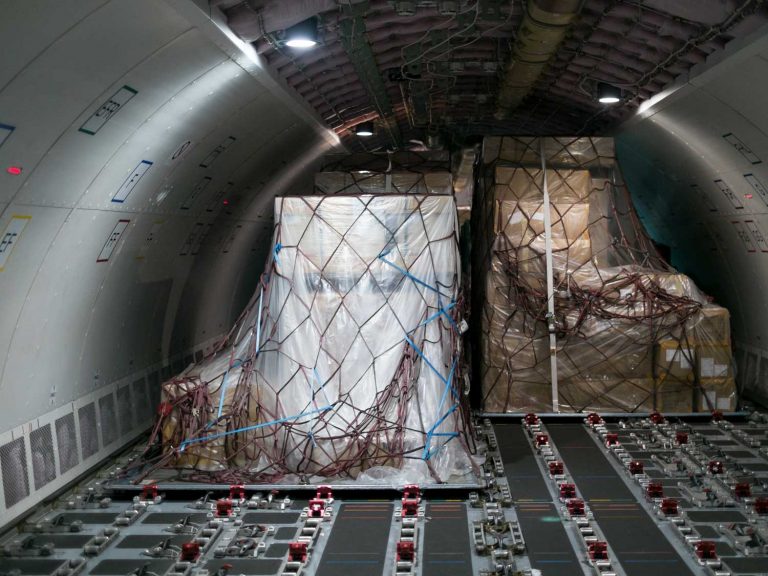
Date:
Air freight market update; February
Global demand for air freight remained low in early January and with no surge in demand from Asia, that would normally precede Chinese New Year, volumes have been trending downwards since the first half of 2022.
The China airfreight market has remained subdued post the Lunar New Year holidays, with volumes falling by over 10% week on week and load factors only reaching 54% in January.
The Baltic Air Freight Index (BAI) tracks weekly transactional rates for general cargo and is a weighted average of 17 key trade routes.
The BAI dropped -33.5% in the 12 months to the end of January, but despite that steep fall the index is almost double where it was in January 2020, before the start of the COVID pandemic.
While index levels for the biggest outbound destinations, including Hong Kong and Shanghai, are either similar to, or well above pre-Covid levels, that is not the case for some smaller but also significant markets, including Vietnam and India, which are slow and likely to slow further in coming weeks.
There is no denying the multiple challenges that face airfreight in 2023, with high inflation and subdued demand, and with any significant economic recovery not anticipated before the 3rd quarter, volumes will remain flat, though rising levels of business in post-lockdown China, is boosting demand and capacity into an otherwise weak market.
Looking ahead, IATA has predicted a 4.3% decline in air cargo volumes in 2023, with yields for carriers expected to decline by around 22%.
Inventory levels will need to replenish to meet demand, when it returns, but with recession likely, economists do not see that happening until the second quarter for many retailers.
The continuing conflict in Ukraine is a drag on the global economy and consumer confidence and there are uncertainties around China’s re-opening which will depress demand.
Global average airfreight rates remain above pre-Covid levels, which suggests that carriers will remain financially stable and the eCommerce sector continues to bloom, with over a fifth of retail goods purchased online and a large percentage of that flying.
Since the advent of the COVID pandemic the biggest challenge has been securing air freight capacity, but weaker demand and returning passenger flight belly-capacity means that is not an issue now on most routes and with the start of the summer holiday schedule in the second quarter, you can add in even more capacity.
There are expectations that freighter fleets may expand on a few routes, which is in addition to the sea/air capacity we can access via Dubai and Singapore (when they are economically attractive).
As soon as the global situation improves, economies are very likely to recover quickly and, as consumer confidence returns, demand for air cargo capacity will rapidly increase, which could quickly lead to capacity constraints and higher prices, but we have volume contracts in place and are ready to adapt to changing market conditions, as necessary, with alternative services, routes and cross-border solutions, if the market really does take off.
Despite the ongoing challenges, we continue to find cost-effective solutions for urgent and time-sensitive shipments, using a blend of scheduled, dedicated and chartered air cargo services.
EMAIL Elliot Carlie for further insights and advice on our air cargo solutions, or to discuss the current market position for live urgent movements.
